8 easy exercises for achy joints
Do achy joints inhibit your exercise goals? Here are 8 easy exercises to help you stay fit and fight joint pain.

Joint pain hurts, no doubt about it. Symptoms can make simple tasks, like unloading groceries, harder to do. And they can also interrupt your fitness goals. But you shouldn't let it stop your efforts to stay healthy and manage pain. According to the Centers for Disease Control and Prevention, adding more physical activity into your day is a great way to combat achy joints… Show More
Joint pain hurts, no doubt about it. Symptoms can make simple tasks, like unloading groceries, harder to do. And they can also interrupt your fitness goals. But you shouldn't let it stop your efforts to stay healthy and manage pain. According to the Centers for Disease Control and Prevention, adding more physical activity into your day is a great way to combat achy joints brought on by osteoarthritis, rheumatoid arthritis or fibromyalgia. Take back your health and manage pain better with this exercise program designed by Sharecare fitness expert Wendy Batts.
Show Less
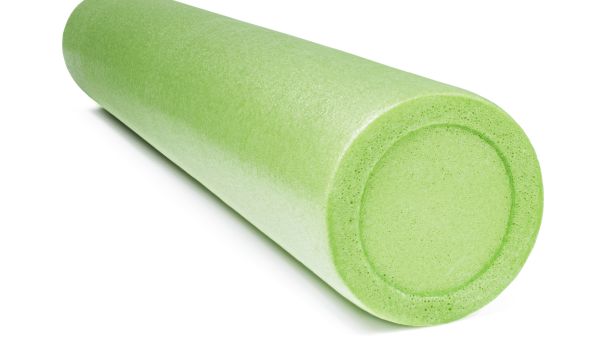
Love Your Foam Roller
Before you begin any form of exercise, always warm up. The best way to start is by targeting your pain with the help of a foam roller. "They help take the adhesions—or knots—out of your muscles," Batts says. "They're also good for your tissues and they help open up blood flow to your muscles, too."… Show More
Before you begin any form of exercise, always warm up. The best way to start is by targeting your pain with the help of a foam roller. "They help take the adhesions—or knots—out of your muscles," Batts says. "They're also good for your tissues and they help open up blood flow to your muscles, too." Focus on the following areas: your calves, illiotibial (IT) band (at the top of your thigh), latissimus dorsi muscle (the bottom of your shoulder blade up to your armpit) and piriformus muscle (right above your butt). Feel for knots while targeting these areas of your body on the foam roller. But don't roll on it! Instead, hold your position for 30 seconds or until the pain disappears.
Show Less
Stretch It out
Knots gone? Time to stretch! Stretching improves the range of motion in your joints, which makes exercising easier and cuts down on injuries. Calf Stretch (shown): Lean on a wall with your hands, extend your right leg back in a straight line from head to heel and hold for 30 seconds. Repeat with… Show More
Knots gone? Time to stretch! Stretching improves the range of motion in your joints, which makes exercising easier and cuts down on injuries. Calf Stretch (shown): Lean on a wall with your hands, extend your right leg back in a straight line from head to heel and hold for 30 seconds. Repeat with left leg. Chest Stretch: Stand with your right leg back and left leg forward and slightly bent. Place your right forearm at a 90-degree angle on the inside of a doorway, then slowly shift your weight forward and turn slightly to your left until you feel a stretch in your right shoulder and chest. Hold 30 seconds and repeat on the left side.
Show Less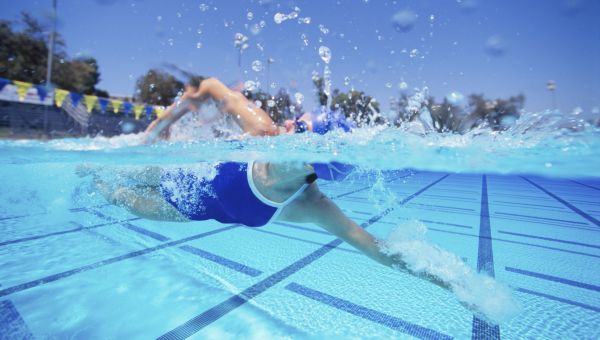
Water Is Wonderful
Now that your body's feeling nice and warm, it's time to get your heart rate up with some aerobic activity. "Be careful that you don't do too much, too fast," Batts says. Aim for 30 minutes of cardio, which you can break into three 10-minute intervals. Batts recommends pool exercise because it… Show More
Now that your body's feeling nice and warm, it's time to get your heart rate up with some aerobic activity. "Be careful that you don't do too much, too fast," Batts says. Aim for 30 minutes of cardio, which you can break into three 10-minute intervals. Batts recommends pool exercise because it allows you to apply weight to your joints with minimal pressure. "Walking in a pool, swimming and marching laps are great ways to get your heart rate going while taking it easy on your joints."
Show Less
Elliptical Motion
If you can't make it to the pool, opt to train on an elliptical machine. It gives you another low-impact way to burn calories and minimize pressure on your joints. And unlike treadmills, many elliptical machines have moveable upper body handles or poles, which let your work out your arms and legs… Show More
If you can't make it to the pool, opt to train on an elliptical machine. It gives you another low-impact way to burn calories and minimize pressure on your joints. And unlike treadmills, many elliptical machines have moveable upper body handles or poles, which let your work out your arms and legs at the same time. Just practice good form, Batts says. "You want to makes sure that your feet don't leave the pedals when you're in motion. When they do, it puts more pressure on your spine, and you don't want that."
Show Less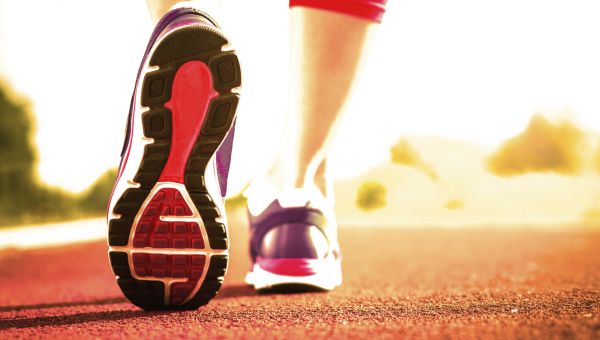
Take a Walk
If you just want to boost your heart rate without getting into the pool or going to the gym, head outside. "The best thing about walking is that everyone can do it," Batts says. "It's a really good way to reinforce your bone density while strengthening your heart and other muscles in your body."… Show More
If you just want to boost your heart rate without getting into the pool or going to the gym, head outside. "The best thing about walking is that everyone can do it," Batts says. "It's a really good way to reinforce your bone density while strengthening your heart and other muscles in your body." Before you begin, invest in a comfortable pair of walking shoes. "And if you're just starting out on a walking plan, make sure to work your way up to different terrains," Batts says. Remember, start low and go slow before adding more activity to your routine.
Show Less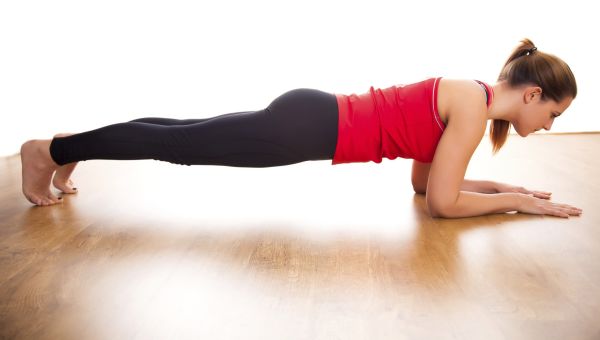
Core Curriculum
It's time for strength training. "The key here is doing exercises that contract your muscles but don't move your joints," says Batts. Start with your core. Plank (shown): Get in push-up position with your forearms at a 90-degree angle and shoulder-width apart on a bench, countertop or floor. Draw… Show More
It's time for strength training. "The key here is doing exercises that contract your muscles but don't move your joints," says Batts. Start with your core. Plank (shown): Get in push-up position with your forearms at a 90-degree angle and shoulder-width apart on a bench, countertop or floor. Draw in your belly button and naturally extend head from spine (neutral head position). Hold for 10 seconds. Repeat up to 10 times. Floor Bridge: Lie on your back with knees bent, feet flat and shoulder-width apart. Draw in your belly button, squeeze butt muscles and slowly lift hips off the floor, keeping knees, hips and shoulders in line. Lower hips back to floor. Repeat 12-15 times for 1-2 sets.
Show Less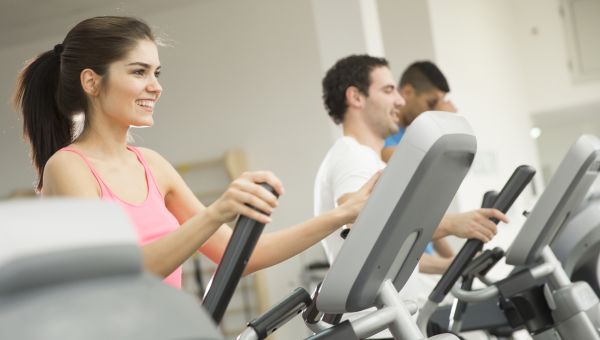
Engage Your Legs
Building leg strength is crucial to managing joint pain—especially if you have achy knees. Batts says this next exercise is great because it works your quads without putting a lot of stress on your knees. And all you need is a wall for support. Wall Squat: Stand near a wall, with your feet shoulder-… Show More
Building leg strength is crucial to managing joint pain—especially if you have achy knees. Batts says this next exercise is great because it works your quads without putting a lot of stress on your knees. And all you need is a wall for support. Wall Squat: Stand near a wall, with your feet shoulder-width apart. Lean your butt against the wall, with feet slightly out ahead of you. Slowly squat, keeping feet straight and in line with knees (you don't want your knees extending past your toes). Hold for 10 seconds. Press through your heels to stand up, keeping your chest up and squeezing butt muscles. Repeat up to 10 times.
Show Less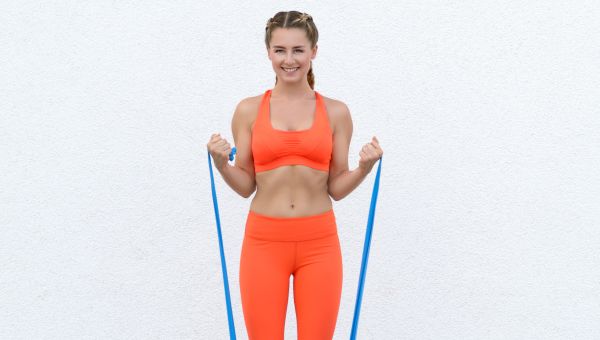
Your Upper Limits
Here's where a resistance band is a great investment. "Resistance bands help build muscle strength and reduce pain in your joint because you're using little to no weight," Batts says. Start with a smaller band to make things easier. Bicep Curl (shown): Stand with feet hip-width apart. Place band… Show More
Here's where a resistance band is a great investment. "Resistance bands help build muscle strength and reduce pain in your joint because you're using little to no weight," Batts says. Start with a smaller band to make things easier. Bicep Curl (shown): Stand with feet hip-width apart. Place band under your feet and hold the handles down by your sides. Curl your arms up, keeping your elbows tucked in. Slowly lower your arms. Repeat 12-15 times for 1-2 sets. Shoulder Rows: Secure band on an object at waist level, like a doorknob. Grab one end in each hand and pull backward, keeping arms straight and elbows in as you squeeze your shoulder blades. Slowly release. Repeat 12-15 times for 1-2 sets.
Show Less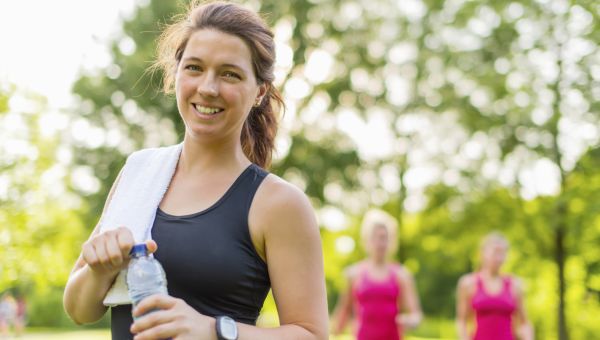
Power Down
Now that you've worked up a sweat, it's time to cool down. "When your body's warm after a workout, repeating your stretching and foam roller exercises—in that order—is a great way maintain the length of your muscles," Batts says. You may even find that using your foam roller is easier now. Remember,… Show More
Now that you've worked up a sweat, it's time to cool down. "When your body's warm after a workout, repeating your stretching and foam roller exercises—in that order—is a great way maintain the length of your muscles," Batts says. You may even find that using your foam roller is easier now. Remember, cooling down after a workout has similar benefits to your warm up: it aids in recovery, improves flexibility, prevents injuries and eases muscle soreness. "If you do experience any inflammation after a workout, ice the area for 10 to 15 minutes," Batts says. And once you're done, rest up. Make sure you don't overdo it and enjoy a rest day at least one to two times a week.
Show LessMore On


video

article

slideshow


video


video
